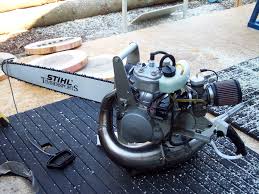Alright guys, I've searched around and I can't find this exact issue and I am experienced in tuning (bigger stuff - no chainsaws just Fords). I put a genuine Walboro Wt215 on my stock MS180. I cannot for the life of me make the carburetor perform like it should. Is there a way to richen the transition between the high and low? If I get a nice and clean idle, the transition is way too lean with a properly adjusted H needle. If I get it too rich at idle where I really have to give it more idle air to stay running, the response is okay but still not a nice sharp response. How can you add a little more fuel between the High and Low portions of the carburetor? I did not transfer the snorkle from the old carburetor on the new one either because I read that it creates issues.
Thanks,
Matt
Thanks,
Matt









